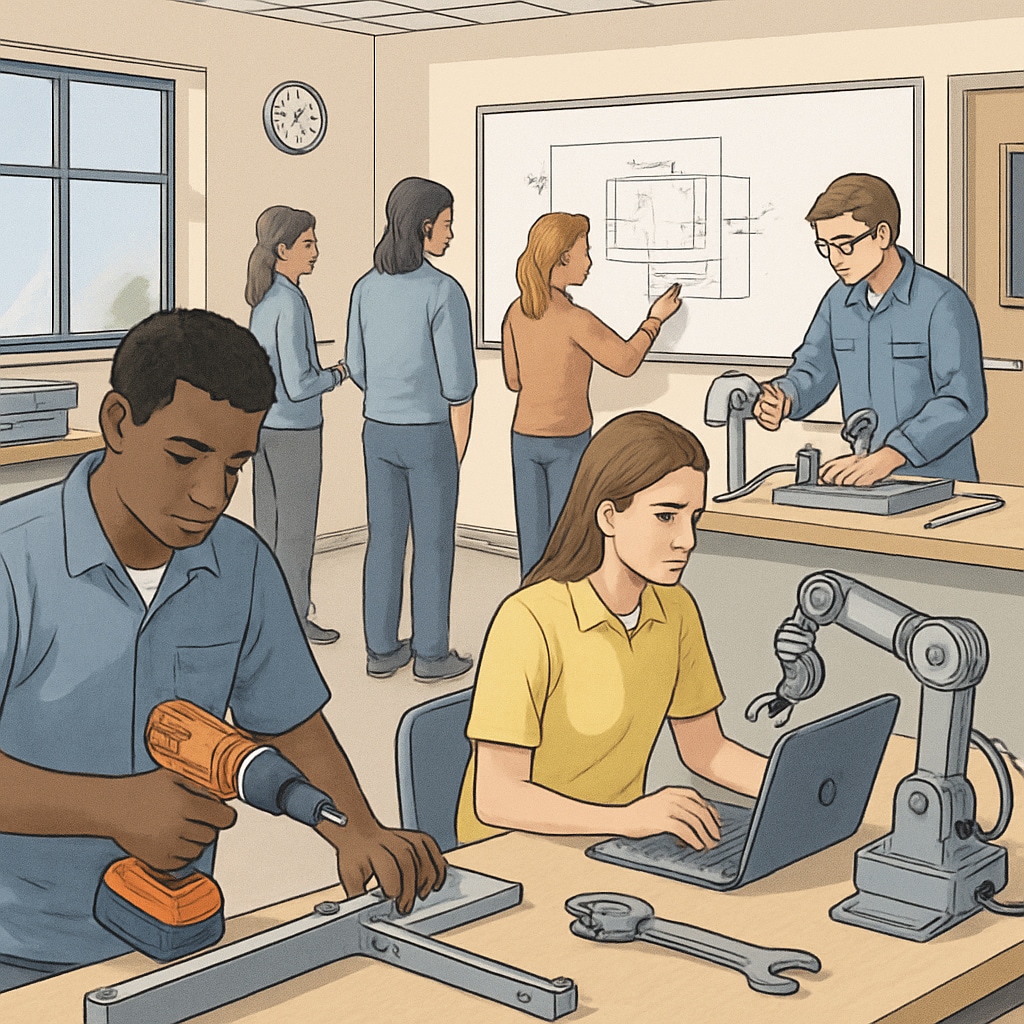The integration of vocational education, district structures, and traditional academics within K12 education presents both challenges and opportunities. As demand for career-ready graduates grows, educational systems must find ways to blend practical skills training with foundational academic knowledge. A balanced approach ensures students are equipped not only for the workforce but also for lifelong learning.

Why Balancing Vocational and Traditional Education Matters
Vocational education focuses on equipping students with industry-specific skills that prepare them for immediate employment. Conversely, traditional academic subjects like math, science, and literature build critical thinking, problem-solving abilities, and a foundational knowledge base. Striking the right balance between these two approaches is crucial to meet diverse student needs and societal demands.
Education systems that prioritize vocational training at the expense of academics risk producing graduates with limited adaptability in knowledge-based industries. On the other hand, systems leaning heavily toward traditional academics may fail to prepare students for practical career paths. Therefore, achieving equilibrium is vital to fostering both intellectual growth and career readiness.
Implementation Models for Integrated Education
Several models exist for integrating vocational education with traditional academics, each with distinct advantages and challenges:
- Hybrid Curriculum: This model incorporates vocational courses alongside academic subjects, allowing students to explore multiple interests. However, scheduling conflicts and resource allocation can pose hurdles.
- Career Academies: Focused on specific industries, these academies blend hands-on training with academic coursework. While effective for career preparation, they may limit exposure to diverse fields.
- Dual Enrollment Programs: Students simultaneously enroll in high school and vocational colleges, earning credits for both. These programs offer flexibility but require strong partnerships between institutions.
Each model must be tailored to the unique needs of the district and its students. For instance, urban districts may prioritize career academies to align with local industries, while rural areas might benefit more from hybrid curricula.

Practical Suggestions for Achieving Balance
To design a comprehensive educational framework that blends vocational and traditional academics, consider the following steps:
- Conduct Needs Assessments: Analyze local industry demands and student interests to determine the focus areas for vocational training.
- Foster Collaboration: Build partnerships with local businesses and higher education institutions to enhance vocational programs and provide real-world learning opportunities.
- Invest in Teacher Training: Equip educators to handle dual roles, teaching both vocational skills and academic subjects effectively.
- Utilize Technology: Incorporate digital tools and platforms to facilitate blended learning, enabling seamless integration of vocational and academic content.
- Monitor Outcomes: Regularly evaluate program effectiveness through student performance metrics, post-graduation employment rates, and feedback from stakeholders.
The Role of District Structures in Integration
District structures play a pivotal role in determining how vocational and academic education are balanced. For example, districts with robust funding can invest in state-of-the-art facilities for vocational training, while underfunded districts may need to prioritize cost-efficient hybrid models. The key lies in strategic resource allocation and alignment with broader educational goals.
Moreover, district policies should encourage flexibility, allowing schools to adapt to changing industry trends and student needs. For example, incorporating apprenticeship opportunities or industry certifications can add value to vocational programs while maintaining academic rigor.
Conclusion: Building a Holistic Framework
Balancing vocational education with traditional academics is a complex yet rewarding endeavor. By adopting tailored implementation models, fostering collaboration, and leveraging district structures effectively, schools can create a comprehensive educational framework. This approach not only prepares students for the workforce but also equips them with the skills to thrive in a rapidly changing world.
As a result, achieving this balance will contribute to a more adaptable, skilled, and well-rounded generation of learners.
Recommended Reading: For more insights, explore Vocational Education on Wikipedia and Education Overview on Britannica.


